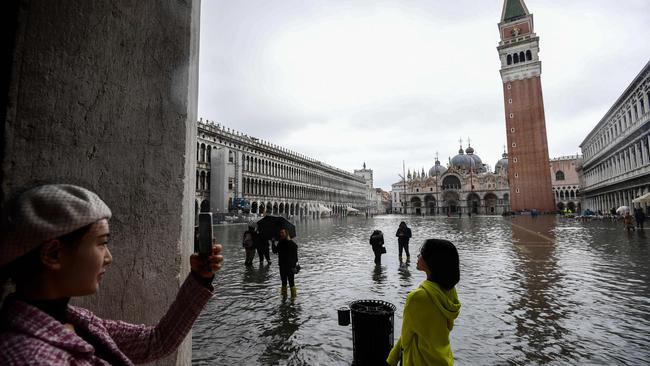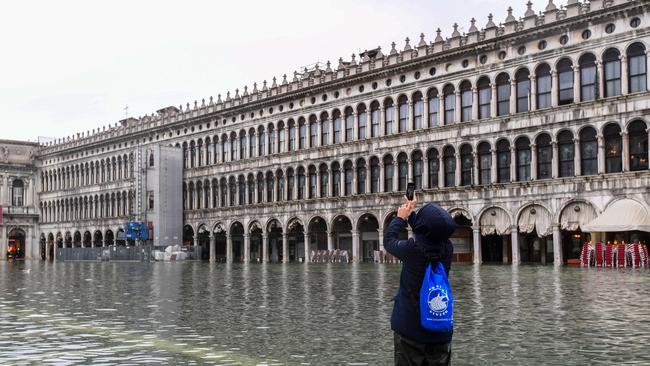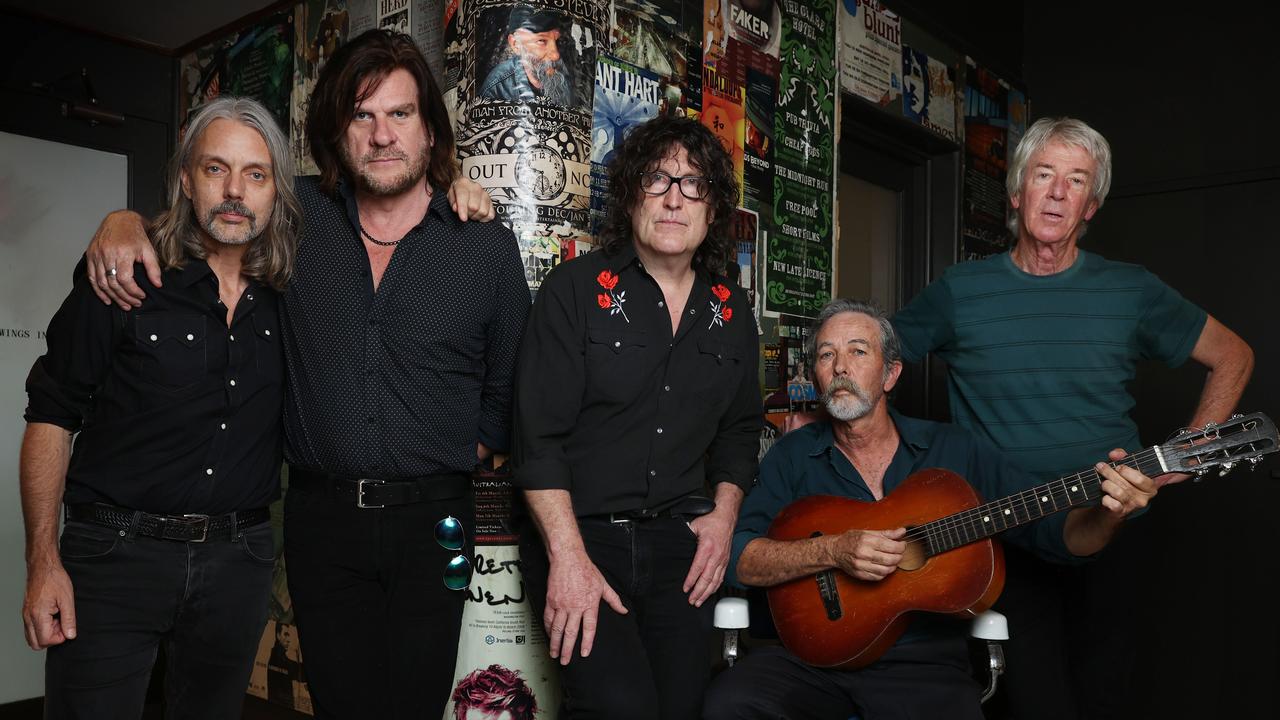After the deluge, Venice struggles to rescue cultural treasures
Venice is on a restoration mission after a flood inundated the city, causing widespread damage to its priceless cultural heritage.

Venice is on a restoration mission after a flood inundated the city, causing widespread damage to its priceless cultural heritage.
On November 12 Venice suffered its worst acqua alta, or “high water”, in more than a half-century. Waters rose 2m above their historical average level. About 80 per cent of the city was flooded, causing damage that Venice’s mayor estimated at above $1.6bn.
Officials at artistic and cultural sites are assessing the effects on treasures inside their centuries-old buildings. In some cases the estimated cost to restore the sites and masterpieces they house will reach millions of euros. Authorities also warn the worst may not be known until a thorough assessment, which may take months, is completed. The cost could rise as further damage might emerge.
Even after the waters of the lagoon retreated, they left behind salt that could corrode marble and mosaics, walls and columns.
“We’ll discover the damage to the city day after day,” says Michele Bugliesi, dean of Ca’ Foscari University of Venice. “This event has brought the fragility of the city to everybody’s attention again.”

After the flood, hundreds of volunteers, many of them students, carried old books and documents to safety, or at least reduced their exposure to water, making their restoration easier.
Several institutions, including Ca’ Foscari University, launched calls for donations.
Some cultural foundations, such as Fondazione Querini Stampalia, have warned that they don’t have enough resources to fix all the damage and may be forced to choose what to repair.
Donations, including about $1.6m from Russia, have arrived from all over the world. Italy’s government has allocated about $106m to repair damage in Venice and the surrounding area. Here’s how some sites have fared:
St Mark’s Cathedral
The basilica, a landmark of the lagoon city, was inundated. Its location on the waterfront is one of the lowest points of the city, so it is often affected by acqua alta. But this time was different.
The water entered the central part of the cathedral, which is highly unusual. After the waves broke a window, water poured through the cathedral crypt.
The crypt last was flooded in 1966, when Venice suffered the only recorded flood in its 1400-year history that was worse than the latest one.
The latest floods eroded the base of many of the cathedral’s columns, making their precious but now fragile Greek marble crumble in some places.
Twelfth-century mosaics covering the cathedral’s floor suffered damage considered severe but not permanent. The flood washed away some of the tesserae of a famous peacock mosaic.
Pierpaolo Campostrini, head of the board for the maintenance of St Mark’s, says more thorough examination of the damage is needed to assess if the basilica’s stability risks becoming compromised over time. “The floods have caused an ageing of the cathedral of 50 years in one day,” he says.
Other churches
About half of Venice’s 120 churches were flooded, according to the city’s patriarchate. Damage ranges from infiltration of water, which over time can cause walls to crumble, to the destruction of mosaics and the loss of or damage to historic crucifixes and candelabras.
Among the most affected churches are San Moise, San Giacomo dall’Orio, San Cassiano, Sant’Alvise, San Marcuola, San Polo, the Basilica of Santa Maria Assunta in Torcello, the Basilica of San Donato in Murano, Santi Apostoli and Santa Maria Mater Domini.
The Italian government estimates that repairs will cost an average of $97,400 for each church. Authorities also are monitoring the stability of the churches’ tall, slender campanili, or bell towers, using satellites.
“The priority now is to manage the more imminent risks, which could come from the subsidence of more vulnerable slender buildings such as the bell towers,” Italian government official Riccardo Fraccaro told reporters.
Teatro La Fenice
This 18th-century opera house just reopened after being shut for almost two weeks. Floods put its electrical and fire-safety systems out of order for days.
Waves propelled by strong winds corroded the outer walls of the theatre while water poured in. La Fenice, where works by Verdi, Rossini and other great Italian composers premiered, had been painstakingly rebuilt after a fire gutted it in 1996.
Flood repairs will cost about $3.25m, says La Fenice’s general manager and artistic director Fortunato Ortombina. But he adds: “I am worried for the future.”

Benedetto Marcello Conservatory
Part of the 19th-century conservatory’s archive of historic prints and manuscripts, including items of inestimable value, was submerged. Ground-floor storage space once presumed safe was soaked by the exceptionally strong flood.
About 1500 volumes of music were completely or partially sodden, including 18th-century editions of scores by composers Antonio Vivaldi and Domenico Cimarosa.
Soon after the flood, conservatory staff and many volunteers catalogued all the wet volumes and put them in boxes to send them to a specialist company.
This specialist company initially will freeze the documents to stop bacteria from developing, to stabilise ink and soluble colours, and to prevent pages from sticking together. After the documents are dry, some will need restoration to ameliorate the blemishes left by the water.
“We absolutely are not on our knees. We acted very fast to save what could be saved,” conservatory president Giovanni Giol says. “But the damage was very heavy.”
Fondazione Querini Stampalia
At this cultural foundation, famed for its library, museum and exhibition centre, a rare collection of 19th-century publications including newspapers and magazines was damaged by water in the library’s ground floor.
Water also entered rooms displaying a show by Swiss painter Luigi Pericle. The works weren’t damaged but the foundation had to close the exhibition.
The foundation estimates its repair bill will come to about $550,000.
THE WALL STREET JOURNAL


